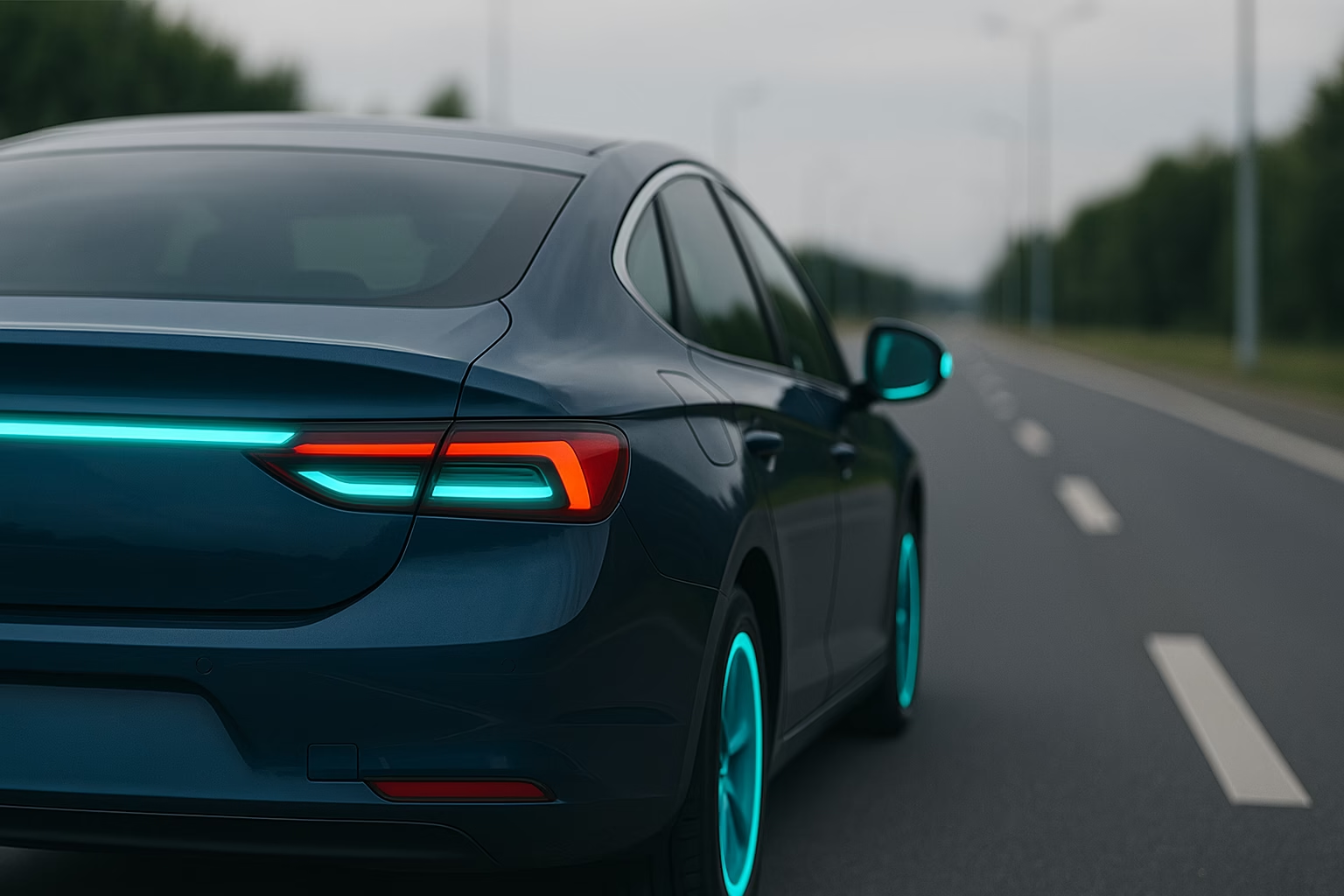In the world of advanced driver assistance and automated driving, most of the intelligence happens behind the scenes. Cameras, radar, LiDAR and software work together to maintain distance, stay in lane and even take control under certain conditions. But as cars begin to operate themselves, there is a growing need to signal that status to the outside world. Automated Driving System (ADS) marker lamps are small external lights that illuminate when a vehicle’s automated mode is active. Think of them as the equivalent of turn indicators or brake lights, but for self‑driving. They let nearby drivers, pedestrians and law‑enforcement officers know when the vehicle is driving itself and when a human is in charge. This external signalling helps build trust, clarifies who is responsible and provides a visual cue to support emerging legal frameworks.
As automated driving moves from laboratory experiments to public roads, regulators and industry bodies have begun to define how these status lamps should look and function. In the United States, the Society of Automotive Engineers (SAE) created Recommended Practice J3134 to describe ADS marker lamps. It specifies that the lamps should emit a distinct colour and be visible from the front and rear of the vehicle whenever Level 3 or higher automated functions are engaged. They must not be confused with brake lights, turn signals or fog lamps. The recommended practice does not set a mandatory colour, but it paves the way for harmonisation by describing the purpose and basic performance requirements.
Internationally, the United Nations Economic Commission for Europe (UNECE) has convened working groups to develop a uniform standard for ADS marker lamps. Colour studies conducted by researchers and lighting experts favour turquoise—a blue‑green hue that is distinct from existing automotive lamps and has been shown to be easily perceived by drivers in both day and night. Several test panels and surveys suggest that turquoise conveys calmness and technical sophistication, and it avoids confusion with emergency services. While the UNECE has not yet issued a binding regulation, the momentum within its GRSG and GRVA working parties points to turquoise as the preferred colour for global harmonisation. For now, however, colour choice remains voluntary and is subject to national approval.
Despite the absence of a universal mandate, manufacturers are beginning to adopt turquoise marker lamps in production vehicles. Mercedes‑Benz is the first to use them publicly as part of its Drive Pilot system. Drive Pilot is a Level 3 automated driving system that lets an S‑Class or EQS sedan take over driving on certain highways at speeds up to 60 km/h, allowing the human driver to take hands off the wheel and eyes off the road. When Drive Pilot is active, slim turquoise lamps integrated into the front and rear light clusters illuminate to signal that the car’s automated mode is engaged. If the driver is prompted to resume control, the lamps extinguish and the driver regains responsibility. Germany approved Drive Pilot nationwide in 2023, and the current approval is valid through July 2028. In Nevada, regulators have given series‑production approval for model year 2026 S‑Class and EQS vehicles with turquoise ADS marker lamps, while California has authorised testing on public roads under specified conditions. These approvals represent an important bridge between recommended practice and full regulation: they legitimise the use of turquoise marker lamps and create real‑world precedents.
Other automakers are watching closely. Companies like BMW, Honda and Ford have demonstrated concept vehicles with blue‑green ADS indicators, and suppliers are developing LED modules tuned to turquoise wavelengths. However, none has yet received type‑approval to use them on public roads outside pilot programmes. Until more manufacturers follow Mercedes‑Benz’s lead and regulators align their rules, turquoise lamps will remain rare sights. Drivers may see them occasionally on the Autobahn or U.S. freeways, but they should not assume every automated vehicle will use the same colour.
From a workshop perspective, these turquoise marker lamps will add another item to the check list. While the lamps themselves are typically LED units integrated into the headlamp and tail lamp assemblies, they rely on specific wiring and control logic tied to the ADS controller. If a bumper cover, headlamp or rear lamp assembly is replaced, technicians should verify that the ADS status lamps still illuminate when the automated mode is engaged and extinguish when it is not. This may require connecting a diagnostic tool, engaging the Level 3 function on a test drive and watching the markers come on. Calibration reports or job cards should note that the ADS status indicator lamps are functional, much like noting that brake lights or fog lamps are working. Insurers and compliance bodies may begin to require proof that these lamps function correctly after repairs, particularly if they become mandatory under future regulations. A quick check could help avoid liability if a vehicle is later involved in a collision while operating in automated mode.
What’s next for turquoise ADS lights? The next few years will likely bring greater clarity. UNECE working parties are drafting regulations that could mandate a uniform colour and photometric specification. If an agreement is reached, turquoise marker lamps would become the universal language of Level 3 automated driving, much like red signals braking and amber indicates a turn. Other manufacturers are preparing for this future; once the rules are finalised, expect models beyond the S‑Class and EQS to light up in turquoise when self‑driving. Harmonised signalling would make it easier for law‑enforcement officers and human drivers to understand when an automated system is in charge, reducing confusion on highways and improving public trust. Until then, the turquoise glow of Drive Pilot remains both a conversation starter and a glimpse of the coming age of autonomous vehicles.

Hiran Alwis is an automotive lecturer and ADAS specialist with over 15 years of experience in diagnostics, advanced safety systems, and technical training. He founded ADAS Project to help everyday drivers and workshop technicians understand and safely use advanced driver assistance systems.
